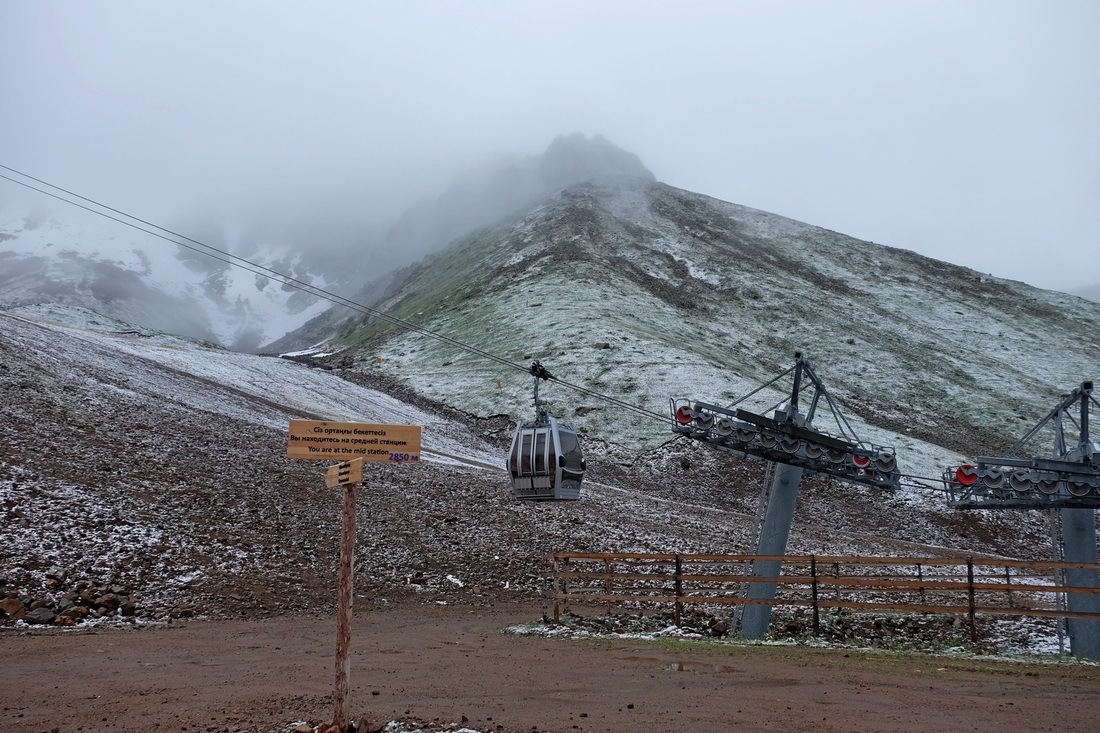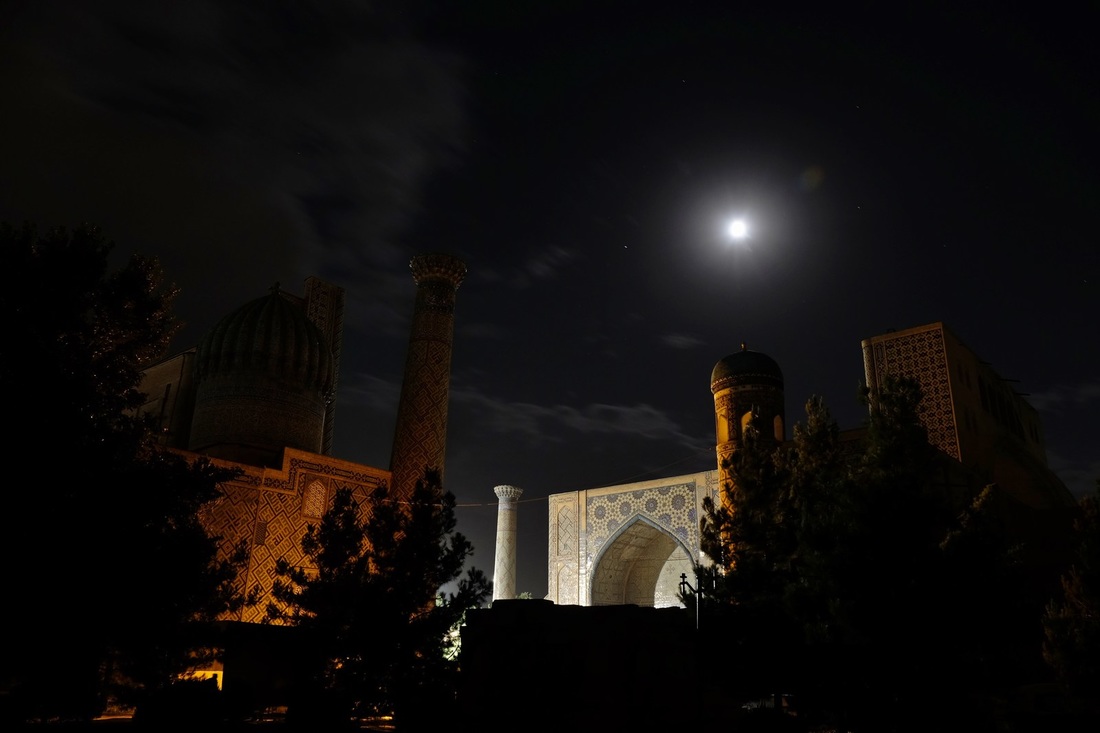T plus 59 - In a plane somewhere over the Caspian Sea (more on this later)
I’ve managed to spent a whole month in Central Asia without quite realising it. And what a month it has been! In exactly 30 days, I have covered four out of region’s five countries, negotiated four land borders and slogged it out over 5,000km on trains, buses, share-taxis and sometimes on foot. I have stayed at state-of-the art hostels, cowered in crumbling ex-soviet has-beens, and slept under the some of the starriest skies I’ve encountered in my life.
Traversing Central Asia was an immersive experience of a dazzling array of customs and cultures. The region boasts a history like no other location in the world. Hosting vast stretches of the Silk Road, this was a place where ancient empires and contemporary ideas converged, and sometimes clashed. The surviving monuments we see today represent the briefest snapshot of the region’s storied past. Even more interesting are the foundations they’re built over, comprising over two millennia of alternating conflict and collaboration between East and West.
Although the region has so much shared history, and a common ancestry, modern-day Central Asia countries offer very different, often contradictory experiences for the traveler willing to seek them out. This means checking out of the five-star hotels and into more rudimentary accommodation, and abandoning the plush carriages of first class and slumming it with the working class on trains. It entails the sharing of seats, and sweat, in less-than-legal road transportation and playing a little gastronomic Russian roulette by eating what looks good, not what looks safe.
There’s a saying about how it’s preferable to have an experience that you regret, rather than regret an experience you never had. Yes, they say that about love too. And while I’ve had my fair share of frustration on this trip, they’ve almost always been overwhelmed by the positives. I was appalled by having my perception of hostility redefined in Turkmenistan, but was completely bowled over by the incredible hospitality in Kyrgyzstan and Kazakhstan (thank you again Sezim and Meir).
I was cheated outright by a black market money changer in Uzbekistan, and immediately after the defensive walls went back up, a total stranger I met in a share-taxi took the trouble to hand-hold me to find my next connection and negotiated a great price for me. I never thanked him, my then-heightened levels of cynicism assuming he was getting something out of it. It wasn’t until I conferred with my fellow passengers that I realised what he had done. I still feel terrible for second-guessing his sincerity, and for my ingratitude at the time. See what I mean? Lose the walls, inhibitions and prejudices. You'll experience far more.
Many travelers will approach Central Asia by “playing it safe” - oh-these-are-dodgy-countries. I’m saying that’s not the way to do it. Risk a little, accept that you’ll lose some, but know that you’re likely to gain so much more. Forget about pre-booking everything – it just limits your flexibility. Most of the time I consulted fellow travelers, or my gut, for accommodation, and the places I stayed at were almost always better than those mentioned in the guidebooks or on Booking.com. Make every effort to communicate, even if you know you sound silly – it is always appreciated by the locals. You never know when you’ll encounter someone who speaks English well, and spending 10 minutes talking to them will give you far more insight than 10 hours of online research. Learn the Cyrillic alphabet – it’s handier than you think. And never-ever follow a tour group.
Highlights? There are so many. I’ll break them down by respective countries.
Kyrgyzstan: Mountains and nature. The Community-based Tourism (CBT) programme, modeled after a similar outfit in Switzerland is truly outstanding. The people here are unbelievably accommodating, so go all out to make friends.
Kazakhstan: Astana, for a spectacle of over-the-top done tastefully. Almaty, to chill out in the most European-esque city in all of Central Asia. Turkestan, home to possibly the single most impressive mausoleum in Central Asia. Kazakhs and Kyrgyz are the same people, so the hospitality is great here too.
Uzbekistan: Samarkand, which has the greatest collection of 15th century Islamic architecture in the region. I didn’t find Bukhara and Khiva super compelling after Samarkand, so it’s better to do them first, if at all, then go for the climatic conclusion in Samarkand. Aral Sea, before its gone, but prepare to be depressed.
Turkmenistan: Darvaza gas crater. That’s it. And perhaps Ashgabat, for all the wrong reasons.
You will note the conspicuous absence of any mention of good eats. Well that’s just it, I haven’t been very impressed by the region’s food as a whole. It seems that millennia of cultural and culinary exchange on the Silk Road have been distilled down to a few varieties of shashlyk (kebabs of lamb), samsas (baked pockets of lamb), laghman (noodles with lamb), plov (pilaf rice with lamb), and manty (dumplings filled with lamb). And despite the staggering variety of spices which must have transited this region in the past, very little is used in modern Central Asian cuisine. So everything tastes a bit one-dimensional. Sure there are regional specialties like naryn (cold sliced noodles and horse sausage) and some Kyrgyz dishes which are excellent, but don’t come to Central Asia expecting to be wowed by every plate.
Commonalities? Sure, the girls are jaw-droppingly gorgeous everywhere in Central Asia. Other than that, each “Stan” offers its own unique combination of attractions. Not bad at all, for a group of nations who only learned how to govern themselves 20 years ago. Of course, the historic setting helps, but it becomes so much more arduous if the environment isn’t conducive, like Turkmenistan. The other Stan’s have become much more accessible these days. Don’t believe (all) the horror stories you read online – that was a different time. The bad rep is good, actually, because it means that the region represents one of the few remaining travel experiences which is authentic and relatively unspoilt. My advice? Come quick, before the arrival of the tour-group hordes, and the development of tourist-oriented tackiness which will inevitably follow.
Here are some highlights from my time in Central Asia:
I’ve managed to spent a whole month in Central Asia without quite realising it. And what a month it has been! In exactly 30 days, I have covered four out of region’s five countries, negotiated four land borders and slogged it out over 5,000km on trains, buses, share-taxis and sometimes on foot. I have stayed at state-of-the art hostels, cowered in crumbling ex-soviet has-beens, and slept under the some of the starriest skies I’ve encountered in my life.
Traversing Central Asia was an immersive experience of a dazzling array of customs and cultures. The region boasts a history like no other location in the world. Hosting vast stretches of the Silk Road, this was a place where ancient empires and contemporary ideas converged, and sometimes clashed. The surviving monuments we see today represent the briefest snapshot of the region’s storied past. Even more interesting are the foundations they’re built over, comprising over two millennia of alternating conflict and collaboration between East and West.
Although the region has so much shared history, and a common ancestry, modern-day Central Asia countries offer very different, often contradictory experiences for the traveler willing to seek them out. This means checking out of the five-star hotels and into more rudimentary accommodation, and abandoning the plush carriages of first class and slumming it with the working class on trains. It entails the sharing of seats, and sweat, in less-than-legal road transportation and playing a little gastronomic Russian roulette by eating what looks good, not what looks safe.
There’s a saying about how it’s preferable to have an experience that you regret, rather than regret an experience you never had. Yes, they say that about love too. And while I’ve had my fair share of frustration on this trip, they’ve almost always been overwhelmed by the positives. I was appalled by having my perception of hostility redefined in Turkmenistan, but was completely bowled over by the incredible hospitality in Kyrgyzstan and Kazakhstan (thank you again Sezim and Meir).
I was cheated outright by a black market money changer in Uzbekistan, and immediately after the defensive walls went back up, a total stranger I met in a share-taxi took the trouble to hand-hold me to find my next connection and negotiated a great price for me. I never thanked him, my then-heightened levels of cynicism assuming he was getting something out of it. It wasn’t until I conferred with my fellow passengers that I realised what he had done. I still feel terrible for second-guessing his sincerity, and for my ingratitude at the time. See what I mean? Lose the walls, inhibitions and prejudices. You'll experience far more.
Many travelers will approach Central Asia by “playing it safe” - oh-these-are-dodgy-countries. I’m saying that’s not the way to do it. Risk a little, accept that you’ll lose some, but know that you’re likely to gain so much more. Forget about pre-booking everything – it just limits your flexibility. Most of the time I consulted fellow travelers, or my gut, for accommodation, and the places I stayed at were almost always better than those mentioned in the guidebooks or on Booking.com. Make every effort to communicate, even if you know you sound silly – it is always appreciated by the locals. You never know when you’ll encounter someone who speaks English well, and spending 10 minutes talking to them will give you far more insight than 10 hours of online research. Learn the Cyrillic alphabet – it’s handier than you think. And never-ever follow a tour group.
Highlights? There are so many. I’ll break them down by respective countries.
Kyrgyzstan: Mountains and nature. The Community-based Tourism (CBT) programme, modeled after a similar outfit in Switzerland is truly outstanding. The people here are unbelievably accommodating, so go all out to make friends.
Kazakhstan: Astana, for a spectacle of over-the-top done tastefully. Almaty, to chill out in the most European-esque city in all of Central Asia. Turkestan, home to possibly the single most impressive mausoleum in Central Asia. Kazakhs and Kyrgyz are the same people, so the hospitality is great here too.
Uzbekistan: Samarkand, which has the greatest collection of 15th century Islamic architecture in the region. I didn’t find Bukhara and Khiva super compelling after Samarkand, so it’s better to do them first, if at all, then go for the climatic conclusion in Samarkand. Aral Sea, before its gone, but prepare to be depressed.
Turkmenistan: Darvaza gas crater. That’s it. And perhaps Ashgabat, for all the wrong reasons.
You will note the conspicuous absence of any mention of good eats. Well that’s just it, I haven’t been very impressed by the region’s food as a whole. It seems that millennia of cultural and culinary exchange on the Silk Road have been distilled down to a few varieties of shashlyk (kebabs of lamb), samsas (baked pockets of lamb), laghman (noodles with lamb), plov (pilaf rice with lamb), and manty (dumplings filled with lamb). And despite the staggering variety of spices which must have transited this region in the past, very little is used in modern Central Asian cuisine. So everything tastes a bit one-dimensional. Sure there are regional specialties like naryn (cold sliced noodles and horse sausage) and some Kyrgyz dishes which are excellent, but don’t come to Central Asia expecting to be wowed by every plate.
Commonalities? Sure, the girls are jaw-droppingly gorgeous everywhere in Central Asia. Other than that, each “Stan” offers its own unique combination of attractions. Not bad at all, for a group of nations who only learned how to govern themselves 20 years ago. Of course, the historic setting helps, but it becomes so much more arduous if the environment isn’t conducive, like Turkmenistan. The other Stan’s have become much more accessible these days. Don’t believe (all) the horror stories you read online – that was a different time. The bad rep is good, actually, because it means that the region represents one of the few remaining travel experiences which is authentic and relatively unspoilt. My advice? Come quick, before the arrival of the tour-group hordes, and the development of tourist-oriented tackiness which will inevitably follow.
Here are some highlights from my time in Central Asia:
Left to Right, then Top to Bottom: Ala-Archa mountain range, Bishkek, Kyrgyzstan; Shymbulak mountains, Almaty, Kazakhstan; Presidential Square, Astana, Kazakhstan; Yasawi Mausoleum, Turkestan, Kazakhstan; Shah-i-Zinda Mausoleum Complex, Samarkand, Uzbekistan; Registan in the moonlight, Samarkand, Uzbekistan; Beached ships on the dry seabed of the ex-Aral Sea, Uzbekistan; Darvaza Gas Crater, Turkmenistan.
Phew! I'm truly exhausted. But happily so. Will be taking a few days off for R&R. Write soon.








